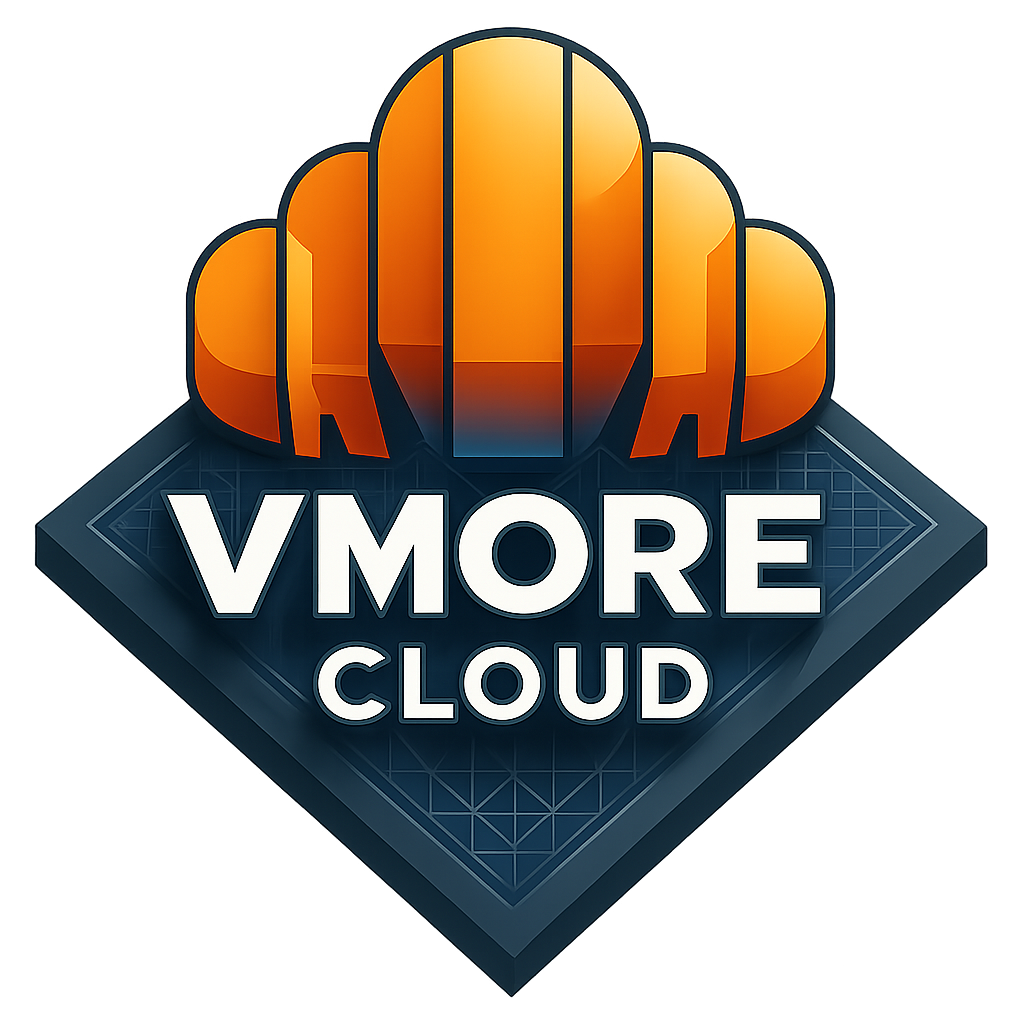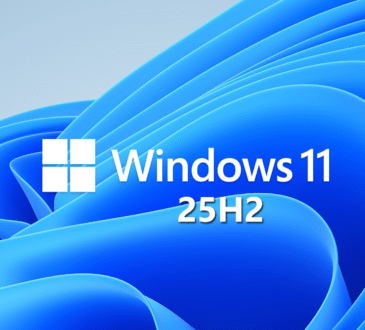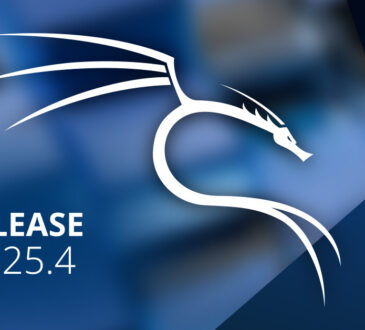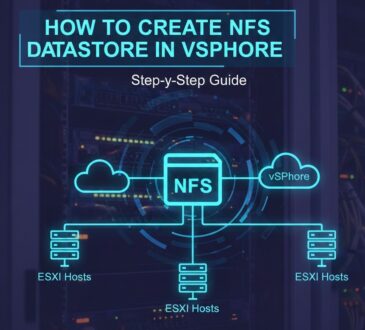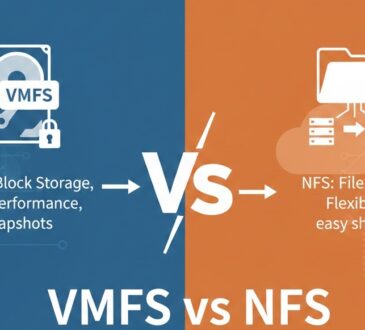VMware ESXi Alternatives: Exploring the Best Hypervisors for Virtualization
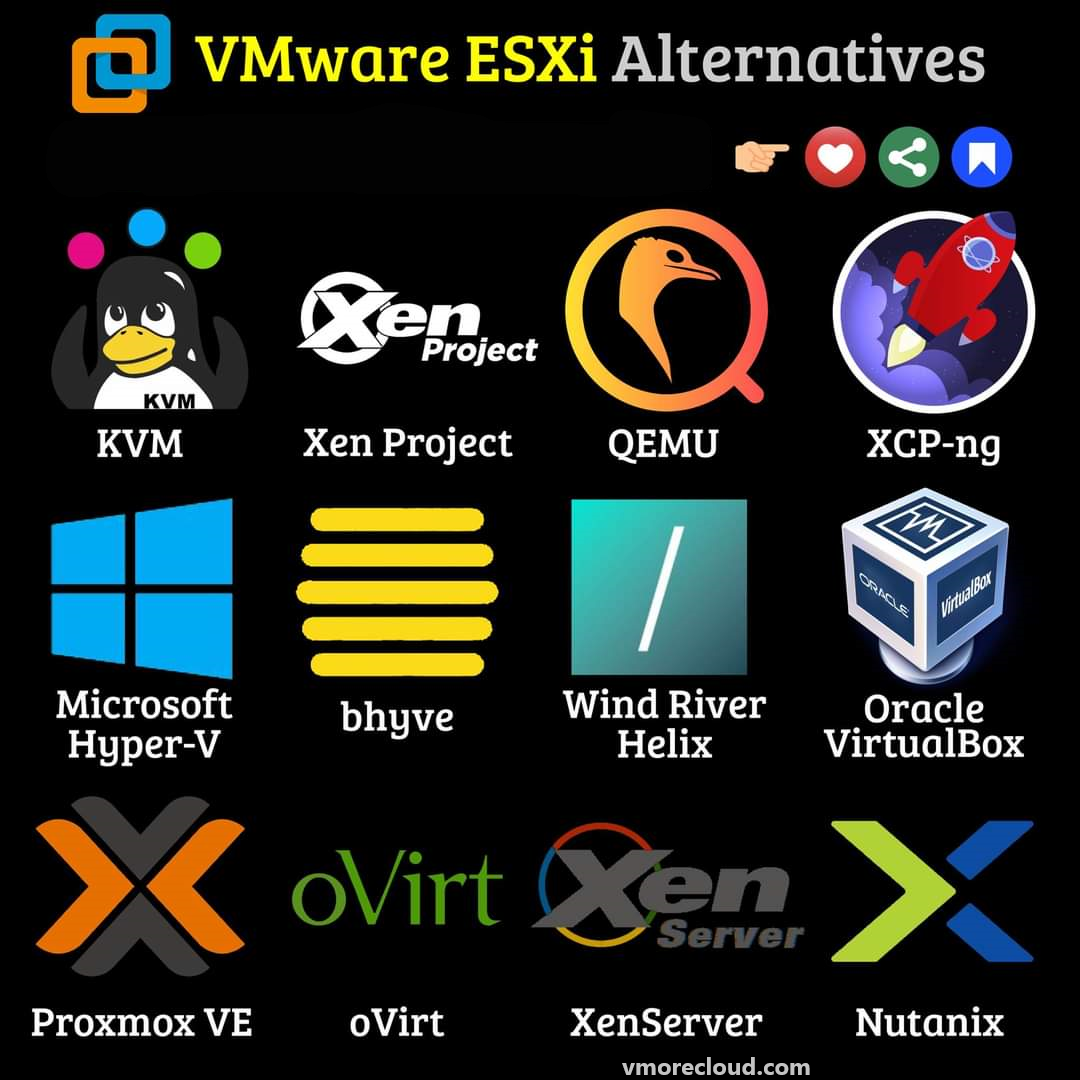
Introduction
VMware ESXi is a popular hypervisor in the virtualization space, but it’s not the only choice. Businesses and individual users seeking alternatives often look for solutions that provide specific advantages, whether in cost, compatibility, or feature set. In this guide, we’ll explore top alternatives to VMware ESXi, such as KVM, Xen Project, QEMU, XCP-ng, Microsoft Hyper-V, bhyve, Wind River Helix, Oracle VirtualBox, Proxmox VE, oVirt, Xen Server, and Nutanix. We’ll compare their features, benefits, and ideal use cases to help you make the best choice for your virtualization environment.
Table of Contents
VMware ESXi Alternatives
1. KVM (Kernel-based Virtual Machine)
KVM (Kernel-based Virtual Machine) is a full-featured, open-source hypervisor integrated directly into the Linux kernel. Developed by Red Hat, KVM allows the Linux kernel to function as a Type-1 hypervisor, enabling it to manage multiple virtual machines (VMs) on a single physical host.
Key Features of KVM
Open Source and Free: KVM is fully open-source and freely available, making it an attractive option for users looking for a cost-effective virtualization solution.
Linux Kernel Integration: Embedded within the Linux kernel, KVM turns the operating system into a hypervisor capable of managing VMs natively.
Compatibility with x86 Hardware: KVM leverages hardware virtualization extensions such as Intel VT (Intel Virtualization Technology) and AMD-V (AMD Virtualization).
Resource Allocation Control: With KVM, users have granular control over CPU, memory, and storage resources allocated to each VM.
Broad OS Support for Guests: KVM supports a variety of guest operating systems, including various Linux distributions, Windows, and BSD-based OSs.
Scalability: Due to its integration with Linux, KVM scales effectively for both enterprise and small-business environments, supporting robust workloads.
Benefits of Using KVM
Performance: KVM operates with near-native performance due to its direct integration with Linux. This is especially beneficial for environments requiring high levels of performance and efficiency.
Security: Since it uses Linux Security Modules (LSMs) and Security Enhanced Linux (SELinux), KVM provides robust security features, isolating each VM to prevent interference or breaches.
Flexibility: Users can run a variety of virtualized workloads on KVM, including web servers, databases, and complex application environments.
Extensive Community and Support: Backed by Red Hat and a vast community, KVM has excellent support and a wealth of resources.
Pros and Cons of KVM
Pros
Cost-effective: Completely free and open-source, which significantly reduces costs for businesses.
High Performance: Near-native performance due to hardware acceleration.
Security: Strong Linux-based security features for enhanced protection.
Flexibility: Compatible with a range of guest operating systems and suitable for many types of applications.
Cons
Linux-Specific Expertise Needed: Primarily suited for users familiar with Linux; it may require some learning curve for Windows-centric users.
Command Line Interface (CLI): While graphical tools are available, most advanced functions are managed via the command line, which may not suit all users.
2. Xen Project
The Xen Project is an open-source hypervisor solution developed to provide high-performance virtualization for x86 and ARM architecture. It was initially developed by Cambridge University but has since grown into a mature, community-driven project, now overseen by the Linux Foundation. As a Type-1 (bare-metal) hypervisor, Xen Project runs directly on the hardware, allowing it to support multiple guest operating systems with minimal performance overhead, making it a popular choice for cloud providers, data centers, and large-scale server environments.
Key Features of Xen Project
Paravirtualization and Hardware Virtualization: Xen Project supports both paravirtualization (PV) and hardware-assisted virtualization (HVM), allowing it to run a wide range of guest operating systems efficiently. Paravirtualization modifies the guest OS to optimize performance, while HVM leverages hardware capabilities like Intel VT-x or AMD-V for full virtualization.
Scalability: Designed with scalability in mind, Xen Project supports multi-tenant and large-scale environments, often used in cloud computing infrastructures.
Security: With its multi-layered security architecture, Xen Project ensures isolation between virtual machines. Features like Xen Security Modules (XSM) provide an additional layer of security, making it suitable for sensitive and regulated environments.
Broad Hardware and OS Support: Xen Project works with x86 and ARM processors and is compatible with various operating systems, including Linux, Windows, NetBSD, and FreeBSD.
Open Source Community: Xen Project’s development is actively maintained by a diverse community of contributors, allowing for continuous improvement, security enhancements, and new feature additions.
Live Migration: Xen supports live migration, enabling VMs to move from one physical host to another without downtime, which is critical for maintaining service availability.
Disaggregated Design: Xen Project follows a disaggregated architecture, allowing management functions to be separated from the hypervisor core, thus reducing the attack surface.
Benefits of Using Xen Project
- Cost-Effective: As an open-source solution, Xen Project is free to use, making it a cost-effective option for businesses looking to implement virtualization without incurring licensing fees.
- Community-Driven: Supported by an active community, Xen Project receives regular updates and security patches.
- High Performance: Due to its lightweight design and minimal overhead, Xen Project offers high performance and reliability for virtualized workloads.
- Enhanced Security: Xen’s architecture is optimized for security, ideal for environments that require strict isolation and regulatory compliance.
Pros and Cons of Xen Project
Pros:
- Open-source and community-supported with no licensing costs
- High security and isolation capabilities, making it suitable for sensitive environments
- Live migration support, enabling flexible and resilient workload management
- Broad OS compatibility across different guest operating systems
Cons:
- Complex to set up and manage for users new to virtualization
- Limited GUI support, making it challenging for users who prefer a graphical interface
- Fewer support resources compared to proprietary solutions like VMware
3. QEMU (Quick Emulator)
- Features: Hardware virtualization for multiple CPU architectures.
- Benefits: Versatile, used for cross-platform emulation.
- Pros: Flexibility in OS support, pairs well with KVM.
- Cons: Lower performance without KVM integration.
4. XCP-ng
XCP-ng (Xen Cloud Platform – Next Generation) is an open-source virtualization platform built on the Xen hypervisor, specifically designed to support high-performance, secure, and scalable virtualized infrastructures. Originally derived from Citrix XenServer, XCP-ng offers a free, community-driven alternative that provides an enterprise-grade solution without licensing fees. It has become popular for organizations looking to implement virtualization with open-source flexibility, especially in data center and cloud environments.
Key Features of XCP-ng
Based on Xen Hypervisor: XCP-ng leverages the robust Xen hypervisor for efficient virtualization and performance, allowing it to handle various workloads from small business applications to large-scale data centers.
Enterprise-Grade Performance: XCP-ng is built for high availability and reliability, with capabilities that make it suitable for demanding workloads. It supports advanced features like resource pooling, live migration, and automatic high availability.
Xen Orchestra Integration: With Xen Orchestra, XCP-ng has a comprehensive management interface that simplifies VM management, monitoring, backup, and orchestration. This integration provides both a powerful GUI and APIs, making it easy to manage even large, complex environments.
Support for Multiple Operating Systems: XCP-ng can host a wide variety of guest operating systems, including Linux, Windows, and various BSDs, thanks to its support for both hardware virtualization and paravirtualization.
VM Backup and Recovery: XCP-ng offers native support for VM backups, snapshot management, and disaster recovery, which are essential for business continuity and data protection.
Enhanced Security and Isolation: With a design that prioritizes security, XCP-ng enables multi-tenant environments with strong isolation and control over resources, ideal for organizations that need secure, multi-user virtualization.
Open Source and Community-Driven: XCP-ng’s open-source nature means it is continuously enhanced and supported by a vibrant community, providing free access to features and upgrades.
Benefits of Using XCP-ng
- Cost Savings: As a fully open-source platform, XCP-ng has no licensing fees, making it a cost-effective choice for businesses needing an enterprise-grade virtualization solution.
- Ease of Management: Xen Orchestra provides an intuitive web-based interface, making it easy to manage, monitor, and automate VM tasks across multiple hosts.
- Scalable and Flexible: XCP-ng scales from small installations to extensive data center deployments, making it versatile for different use cases.
- Customizability: Users can modify and customize XCP-ng to fit unique requirements, thanks to its open-source license and active community support.
Pros and Cons of XCP-ng
Pros:
- Completely free and open-source, with no hidden costs or feature limitations
- Powerful orchestration with Xen Orchestra, supporting backups, live migration, and detailed monitoring
- Strong community support and regular updates, which keep the platform secure and feature-rich
- Excellent performance and security for multi-tenant and cloud environments
Cons:
- Limited third-party support compared to commercial solutions like VMware ESXi
- Setup and configuration can be challenging for beginners
- Lacks native integration with some enterprise ecosystems that are present in more proprietary platforms
5. Microsoft Hyper-V
- Features: A type 1 hypervisor integrated with Windows Server.
- Benefits: Native to Windows, supports both Windows and Linux VMs.
- Pros: Great integration with Windows environments, strong enterprise support.
- Cons: Licensing costs for enterprise features, limited compared to Linux-based hypervisors.
6. bhyve (BSD Hypervisor)
- Features: A lightweight hypervisor primarily used with FreeBSD.
- Benefits: Free, specifically tailored for BSD systems.
- Pros: Lightweight, open-source.
- Cons: Limited OS support, fewer features compared to ESXi.
7. Wind River Helix Virtualization Platform
- Features: Virtualization platform designed for embedded systems.
- Benefits: Optimized for real-time and embedded systems.
- Pros: Excellent for IoT and industrial applications.
- Cons: Niche use cases, not ideal for standard virtualization tasks.
8. Oracle VirtualBox
- Features: A versatile, cross-platform type 2 hypervisor.
- Benefits: Ideal for desktop virtualization, runs on Windows, Mac, and Linux.
- Pros: Free, user-friendly interface.
- Cons: Not suited for large-scale enterprise environments.
9. Proxmox VE
- Features: Open-source platform with support for both KVM and LXC.
- Benefits: Great for managing both virtual machines and containers.
- Pros: Cost-effective, robust web management interface, strong community support.
- Cons: Requires some Linux knowledge.
10. oVirt
- Features: Open-source virtualization platform based on KVM.
- Benefits: Feature-rich, suitable for enterprise environments.
- Pros: Advanced management features, high compatibility.
- Cons: Steeper learning curve, Linux-centric.
11. XenServer (now Citrix Hypervisor)
- Features: A commercial-grade hypervisor based on the Xen Project.
- Benefits: Offers support and advanced features from Citrix.
- Pros: Scalability, enterprise-grade features.
- Cons: Licensing costs for advanced features.
12. Nutanix AHV
- Features: A hypervisor integrated within the Nutanix enterprise cloud OS.
- Benefits: Simplified management, great for hyperconverged infrastructures.
- Pros: Unified management, ideal for hybrid cloud.
- Cons: Primarily available in Nutanix ecosystems.
Pros and Cons Comparison Chart
| Hypervisor | Pros | Cons |
|---|
| KVM | Free, high performance on Linux | Linux-specific |
| Xen Project | Scalable, well-supported | Complex setup |
| QEMU | Flexible, cross-platform | Needs KVM for performance |
| XCP-ng | Fully open-source, high performance | Limited commercial support |
| Microsoft Hyper-V | Windows integration, good enterprise support | Licensing fees |
| bhyve | Lightweight, free | Limited OS support |
| Wind River Helix | Real-time IoT support | Niche use |
| Oracle VirtualBox | Free, cross-platform | Not for large-scale use |
| Proxmox VE | KVM and LXC support, robust interface | Linux knowledge needed |
| oVirt | Feature-rich, enterprise-focused | Steeper learning curve |
| XenServer | Citrix support, scalable | Licensing costs |
| Nutanix AHV | Simplified hybrid management | Limited to Nutanix systems |
When to Use Each Hypervisor
Use KVM or Proxmox VE if you prefer open-source and work primarily in Linux environments. Choose Hyper-V if your infrastructure is largely Windows-based. Opt for Xen Project or XCP-ng if you need scalability and are comfortable with more complex setups. bhyve is a great choice if your infrastructure is BSD-based. Wind River Helix is ideal for IoT or embedded system applications. Oracle VirtualBox is suited for individual developers or desktop-level virtualization. Nutanix AHV is recommended for hybrid cloud solutions and hyperconverged environments.
- Design
